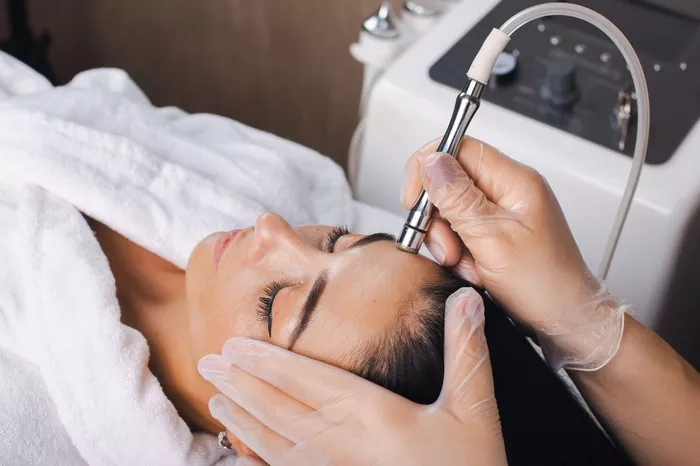Microdermabrasion is a popular cosmetic treatment that can help improve the appearance of fine lines, wrinkles, and other skin imperfections. One of the key components of microdermabrasion is the use of microdermabrasion crystals, which are tiny particles that are used to exfoliate the skin. In this article, we will explore what microdermabrasion crystals are made of, including the science behind how they work and the benefits of using them in a microdermabrasion treatment.
The Science Behind Microdermabrasion Crystals
Microdermabrasion crystals are tiny particles that are used to exfoliate the skin. They work by removing the outer layer of dead skin cells, which can help improve the texture and tone of the skin.
Microdermabrasion crystals are typically made from one of two materials: aluminum oxide or sodium bicarbonate. Aluminum oxide crystals are the most commonly used, as they are highly effective at exfoliating the skin and can be used on a wide range of skin types. Sodium bicarbonate crystals are less abrasive than aluminum oxide crystals, making them a good option for people with sensitive skin.
Benefits of Using Microdermabrasion Crystals
There are several benefits to using microdermabrasion crystals in a microdermabrasion treatment. These include:
Exfoliation: Microdermabrasion crystals are highly effective at exfoliating the skin, which can help remove dead skin cells and reveal smoother, more radiant skin.
Improved Texture: By removing the outer layer of dead skin cells, microdermabrasion crystals can help improve the texture and tone of the skin.
Reduced Appearance of Fine Lines and Wrinkles: Microdermabrasion crystals can help reduce the appearance of fine lines and wrinkles by stimulating collagen production in the skin.
Improved Skin Hydration: By removing dead skin cells, microdermabrasion crystals can help improve the skin’s ability to absorb and retain moisture.
How Microdermabrasion Crystals Work
Microdermabrasion crystals work by removing the outer layer of dead skin cells, which can help improve the texture and tone of the skin. During a microdermabrasion treatment, the crystals are applied to the skin using a handheld device. The device uses suction to lift the skin and bring it into contact with the crystals, which are then gently rubbed onto the skin.
As the crystals come into contact with the skin, they remove the outer layer of dead skin cells, revealing smoother, more radiant skin. The suction from the device also helps to stimulate blood flow to the skin, which can help improve skin tone and texture.
After the treatment, the skin may be slightly red and sensitive, but this typically subsides within a few hours. It is important to avoid sun exposure and use sunscreen after a microdermabrasion treatment, as the skin may be more sensitive to UV radiation.
Conclusion
Microdermabrasion crystals are a key component of microdermabrasion treatments, helping to exfoliate the skin and improve its texture and tone. They are typically made from aluminum oxide or sodium bicarbonate and work by removing the outer layer of dead skin cells. By using microdermabrasion crystals in a treatment, you can enjoy smoother, more radiant skin and a reduction in the appearance of fine lines and wrinkles. If you are interested in microdermabrasion, be sure to consult with a skincare professional to determine if it is right for you.


